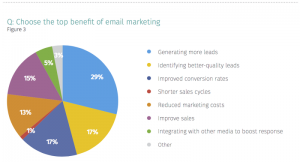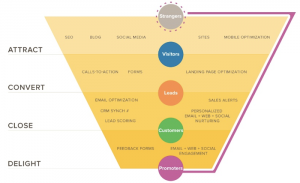To Americans of a certain generation, the words “coffee shop” generate two immediate associations. The first is the Seattle-born coffee giant Starbucks. The second is a (mostly) fictitious coffeehouse in Greenwich Village, where Rachel Green might accidentally serve you espresso instead of Earl Grey in an oversized ceramic mug.
Starbucks and Central Perk, the “Friends” favorite hideout, may hold equal amounts of national mindshare, but it’s Central Perk that everyone envies. Why? Because Central Perk is the living embodiment of customer love and loyalty. The “Friends” crew returned every day for the comfy couches, fresh coffee, and warm familiarity of their neighborhood cafe. If a Starbucks opened up across the street, do you think Monica and the gang would have given up that orange sofa, even if the coffee was slightly better (or cheaper)? I doubt it. Even with the best loyalty program around, Starbucks could never have stolen their hearts.
Through the early 2000s, these types of personal relationships were the classic small business advantage because they led to a loyalty that, according to 82 percent of small business owners, is the main impetus for business growth. But things are changing. While small businesses like Central Perk have always had more success building and retaining in-person relationships than monolithic brands, they are having trouble transferring that advantage to the mobile age—while big brands like Starbucks, American Airlines, and American Express are making headlines for adapting.
Still, all is not lost for SMB loyalty. The trick is learning to extend the tenets of old-fashioned loyalty into the newfangled world. The corporations may have the reach and the muscle, but with the right combination of tried-and-true values and smart tech tools, smaller shops hold the advantage in the handheld world all the same. Here’s why:
1. The Gunther Factor: Every now and then, you may find last month’s Latte Guy still at the barista station at your local corporate-owned shop. But more often than not, his face will be unfamiliar and your name will be misspelled on the cup—again. Small business owners understand that their staff is the face of their company. If they treat staff well and allow them to have a sense of ownership and pride in the business, that attitude will carry over to the relationships they build with regular customers. Rachel knows your name and (usually) how you take your coffee. Latte Guy may or may not be there next week. While big brands can try to mimic that familiarity, they can’t possibly build true relationships the way that companies who actually know their customers can. And with a tool like a mobile app, that authentic connection translates to the digital world. For example, your barista may access your coffee shop app’s push notifications feature to update specific customers when their favorite beverage is the special of the day. Which leads to…
2. Catering to the Customer, Not the Mass Consumer:
People like Starbucks because they know exactly what they are going to get. But small businesses can do customers one better: they can give their customers exactly what they want. I live abroad, where American classics like red velvet flavoring are hardly commonplace. So for my birthday last year, my husband, knowing it was my favorite, asked the owner of our local bakery to bake one as a special favor. Though she had never made one before, she took the time to research, experiment, and eventually craft the best birthday cake of all time—which is why we will be buying our birthday cakes at that bakery for years to come. Mobile technology could have amplified that effect even further by socializing the experience. For example, the bakery could have used an app to share pictures of the cake-in-process (“Look what we made special for Shira’s birthday! Shhh!”) or encouraged my husband and me to share pictures of our friends and family pre- and post-cake consumption.
3. SMBs Be Nimble, SMBs Be Quick:
Today’s fast-paced environment poses plenty of challenges for small businesses: connecting with customers who are always in a rush comes to mind—but it also has specific benefits. Big businesses move slowly and require a lot of red tape to get anything accomplished. New projects often require many levels of sign-offs before the marketing department can get to work on an initiative as involved as trying out a new tool, like a mobile application. In contrast, small business owners can decide things independently and activate quickly. Not only could a neighborhood coffee shop roll out a new mobile loyalty program within weeks, for example—it could then A/B test, tweak, and update it immediately, without needing to get clearance from legal. This is essential in the hyper-mobile era.
4. Locally Grown, Locally Loved
Fortune 500 businesses may sponsor the local Little League team, but they’re not as much a part of the community as the luncheonette owner who graduated high school with your dad. There’s something about a local business employing local people that instills loyalty. (So much the better if that local business also supports the Little League or donates to the local animal shelter.) In today’s Walmart economy, local goes a long, long way. That connection can be parlayed into engaging digital content and offers, even games that leverage the local/social aspect. It also makes a good case for keeping business owners actively involved in all marketing efforts, as they can give marketing content an authentic local voice.
5. The Network Effect
It’s not just about the relationship between small businesses and their customers, or small businesses and their staff. It’s about the relationship between your customers with each other, too. I was recently chatting with a friend about a little Italian restaurant in her hometown. It opened more than 20 years ago, and it has everything going for it in the loyalty game: local roots, good food, and a polite staff that knows regulars by name. It her parents’ favorite, and over the years, they have recommended the place to their friends, who recommended it to their friends (“The linguini and clams is to die for!”). Needless to say, today they can’t walk into that restaurant without running into at least a dozen people they know. The fact is, happy, loyal customers beget more happy, loyal customers—and the resulting social connections augment the overall dining experience. This network effect can easily work to the advantage of SMBs in the mobile world as well. For instance, SMBs can create an app with add-ins that play to the local community in a genuine way—like greetings from staff, rewards for sharing with friends, posting a picture of customers enjoying the pasta special with a bottle of Valpolicella, or pushing out an “insider’s” message about the rare batch of Kona beans that came in this morning.
The world is changing, and small businesses need to change with it. But there’s no need to abandon the old-school techniques that lead to success. Rather, by using new developments like mobile technology, small businesses can buffer—and better—their oldest assets. Because who wouldn’t want to get a push notification from Central Perk that there’s finally a spot available on the couch?
(276)
Report Post





